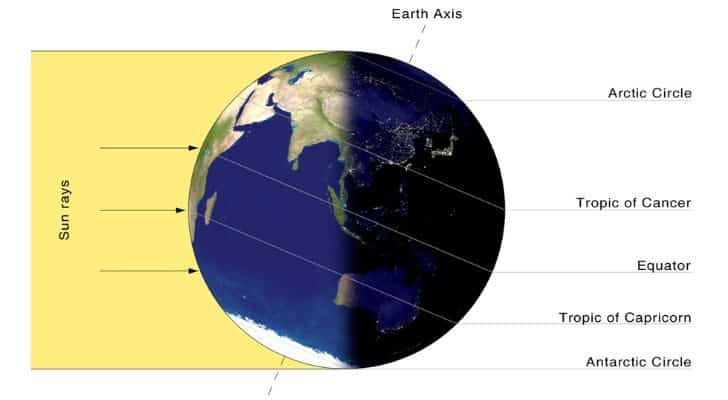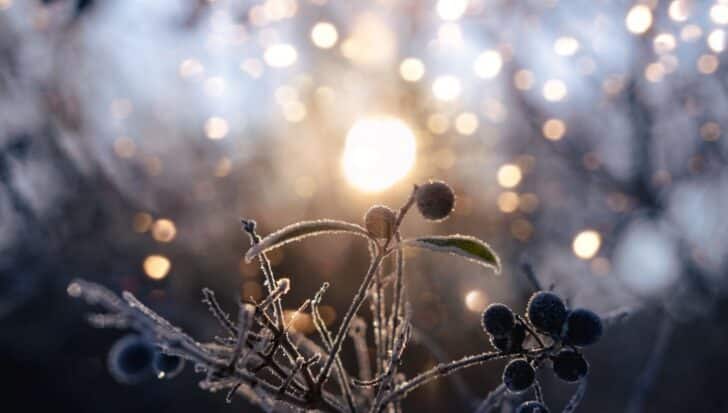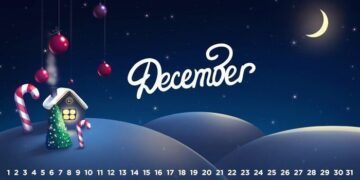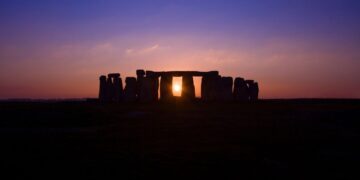In the days leading up to the winter solstice, the nights grow longer and colder. Once the moment has passed, the days will grow longer, and the Earth will start to warm up again.
Apart from its astronomical significance, the day holds cultural importance, with many people seeing it as a time of rebirth and celebration.
Read on to learn why families worldwide come together to celebrate the winter solstice!
The winter solstice occurs twice a year: once in the Southern Hemisphere on June 20 or 21 and once in the Northern Hemisphere on December 21 or 22.
In the Northern Hemisphere, at noon on the winter solstice, the Sun sits directly above the Tropic of Capricorn. When the Southern Hemisphere has its winter solstice, it sits above the Tropic of Cancer.
The word solstice comes from the Latin and old English solstitium, with sol meaning “Sun” and sistere meaning “to stand still.” The first known use of the word was in the 14th century.
The winter solstice occurs because as the Earth spins on its axis, the north and south poles tilt away from the Sun. This makes the winter solstice the shortest day and longest night in either hemisphere.
In the Arctic Circle, the Earth tilts away from the Sun in winter so much that the Sun doesn’t rise above the horizon. This means that it is in complete darkness during the winter solstice!
At the winter solstice, people in Iran and the surrounding region celebrate Yalda. This ancient Persian celebration sees families get together to celebrate Mithra, the Sun god, and his victory over darkness as the days grow longer.
Stonehenge is perfectly aligned with sunset on the winter solstice. It is believed that the people who built the strange stone circle considered this celestial event very important. The same goes for Ireland’s Newgrange and Cahokia Woodhenge in Illinois.
Ancient Romans celebrated the birthday of the “Invincible Sun” on December 25, just after the winter solstice. Historians believe this is why the church chose the same date for the birth of Christ.
The Inca people in South America celebrated Inti Raymi, their New Year festival, on June 24. They celebrated their Sun god, Inti, as the days started to grow longer in the Southern Hemisphere. It’s still celebrated today in Peru.
In 200 BC, Eratosthenes, an ancient Greek mathematician, calculated the circumference of the Earth by sitting at the bottom of a well on the solstices and observing the angle of the light at noon.
In 1994, a festival called Burning the Clocks was created in England in response to how commercialized Christmas had become. Every year, on the winter solstice, people from all religions gather to burn lanterns in Brighton, England.
Although the solstice is celebrated for an entire day or even multiple days, it technically refers to the exact moment the Sun is above the Tropic of Capricorn or the Tropic of Cancer.
Sometimes, the December solstice occurs later on the 23rd. This hasn’t happened since 1903 and will not happen again until 2303.
Even though it may feel like the middle of winter for most people, it marks the beginning of astronomical winter, which ends around March 20.
Contrary to popular belief, the Earth is actually almost at its closest point to the Sun during the December solstice. Winter happens mostly because of the tilt of the Earth’s axis, not because it is closer to the Sun.
After the winter solstice, the days get longer, and the further north you are, the quicker this happens. This is the same for people further south of the Southern Hemisphere.
On the winter solstice of 1968, the Apollo 8 mission launched, making it the first crewed mission to orbit the Moon.
Many people believed the world would end on the winter solstice in 2012. This marked the end of the Mayan calendar cycle, which lasted 5126 years. Obviously, they were wrong.
All planets have a winter solstice. For example, a Martian year lasts around 687 Earth days, so the solstice occurs once every two Earth years.
People have different names for the winter solstice. In Old Germanic, people called it Yule. Other names include midwinter, hibernal solstice, and the long night.
In 2010, a full moon occurred on the evening of the winter solstice. This is very rare and won’t happen again until 2094!

Just like the summer solstice, the winter solstice is more than just the movement of the celestial bodies we call home.
It has inspired religions and imaginations around the world and even helped us map the Earth and the solar system.
It’s a significant moment every year that unites us all, bringing warmth back into our homes and bringing people together.


















